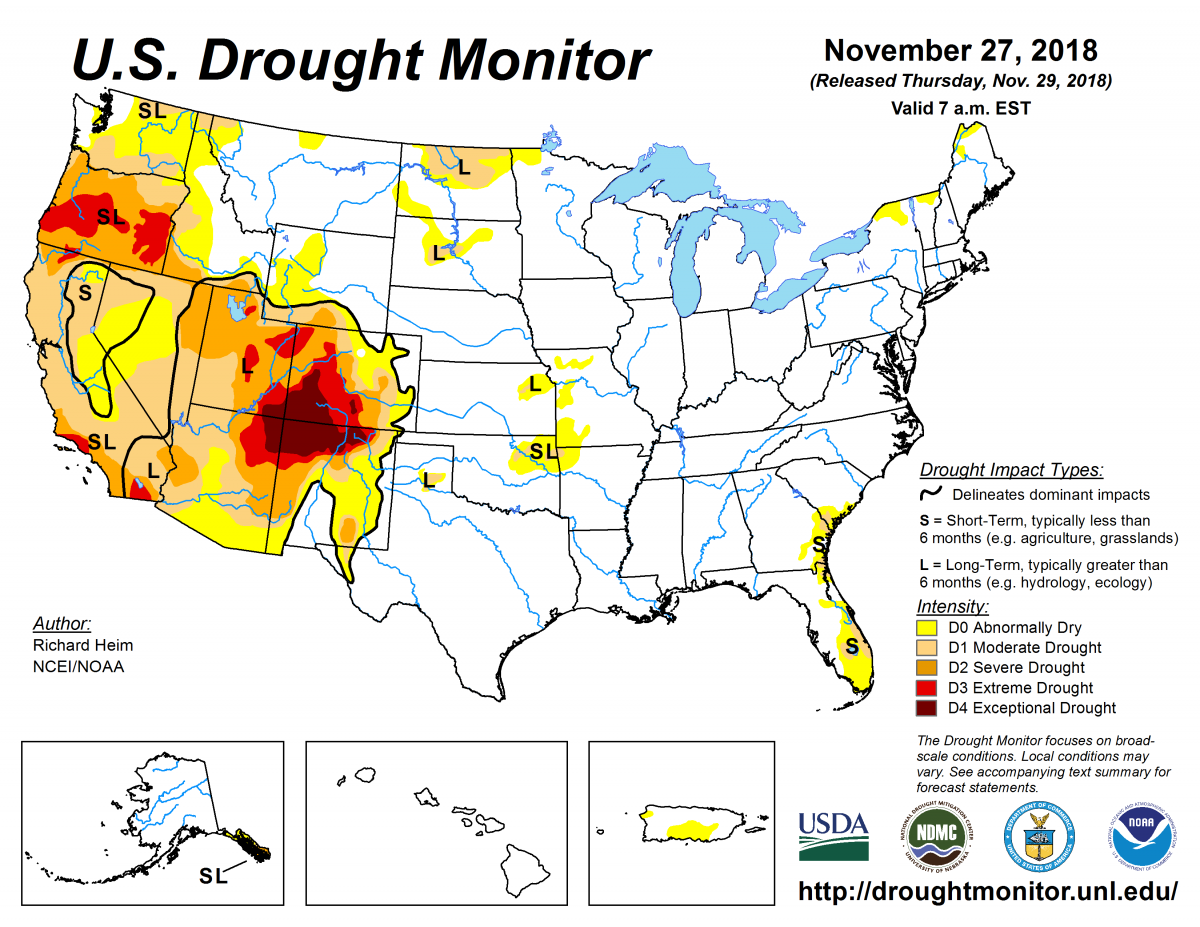
According to the November 27, 2018, U.S. Drought Monitor, moderate to exceptional drought covers 19.5% of the United States, an increase from last week’s 19.1%. Extreme and exceptional drought—the worst categories—cover 3.6% of the United States for the fourth week in a row.
A series of upper-level weather systems and their associated surface lows and fronts moved across the contiguous United States during the week. They brought beneficial precipitation to much of the Pacific coast; parts of the northern and central Rockies, central Plains, Midwest, and Gulf of Mexico Coast; and much of the Mid-Atlantic to Northeast. But they missed much of the Southwest, northern Plains, and southern Plains, where no precipitation, or less than a 10th of an inch, fell.
The precipitation was less than the weekly normal across parts of the interior Pacific Northwest and northern New England and much of the Midwest and Southeast. While beneficial, the precipitation in the West was mostly not enough to overcome months of precipitation deficits. Slight contraction of drought or abnormal dryness occurred in parts of Arizona (a reassessment), Colorado, and Montana, while expansion occurred in southern California and Nevada. Growing precipitation deficits prompted expansion in the southern Plains.
Rain and snow from weather systems this week—and previous weeks to the last six months—have built up precipitation surpluses across much of the country east of the Mississippi River, with streamflow mostly above normal. November 25 reports from the U.S. Department of Agriculture (USDA) show soil moisture surpluses in most states east of the Mississippi, with Florida, coastal Georgia, and South Carolina being the exceptions.
Contraction and expansion of abnormal dryness occurred in coastal Georgia and South Carolina to accommodate a variable precipitation pattern. Temperatures were cooler than normal from the Mississippi River to East Coast, most of Texas, and parts of the Four Corners States. Temperatures were warmer than normal across much of the West, central to northern Plains, and most of Florida.

The full U.S. Drought Monitor weekly update is available from Drought.gov.
In addition to Drought.gov, you can find further information on the current drought as well as on this week’s Drought Monitor update at the National Drought Mitigation Center. See their recent news releases.
The most recent U.S. Drought Outlook is available from NOAA’s Climate Prediction Center and the U.S. Department of Agriculture provides information about the drought’s influence on crops and livestock.
For additional drought information, follow #DroughtMonitor on Facebook and Twitter.



